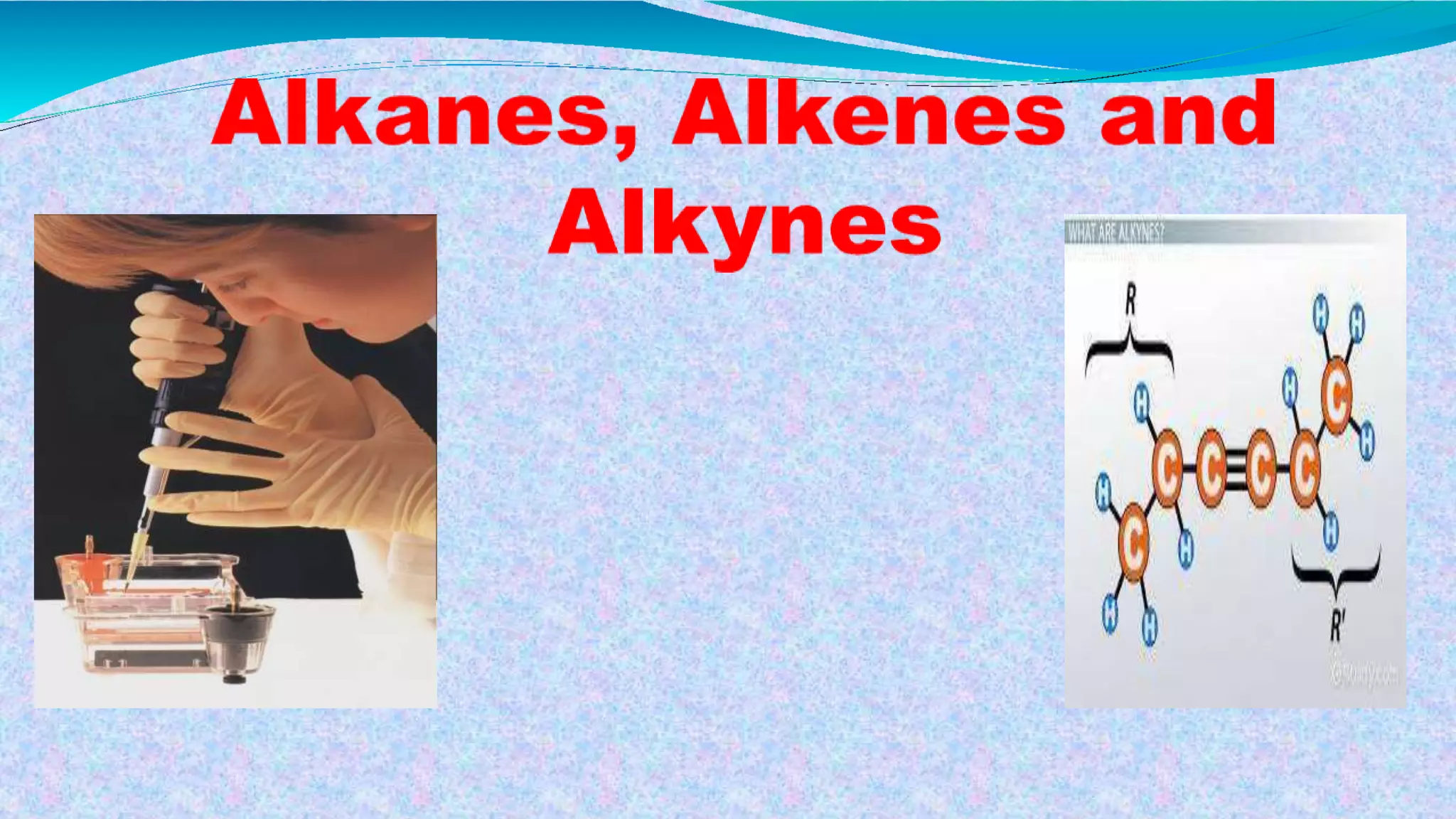This document provides an introduction to organic chemistry and discusses some key topics including:
- Organic chemistry is the study of hydrocarbons and their derivatives, while inorganic chemistry is the study of all other substances.
- Carbon can form four bonds by bonding to four other atoms, three other atoms, or two other atoms.
- Alkanes are saturated hydrocarbons containing only carbon-carbon single bonds. The molecular formulas of alkanes follow the general formula CnH2n+2.
- Structural formulas depict the atoms and bonds in a molecule either expanded or condensed. Isomers are compounds with the same molecular formula but different structures.





































